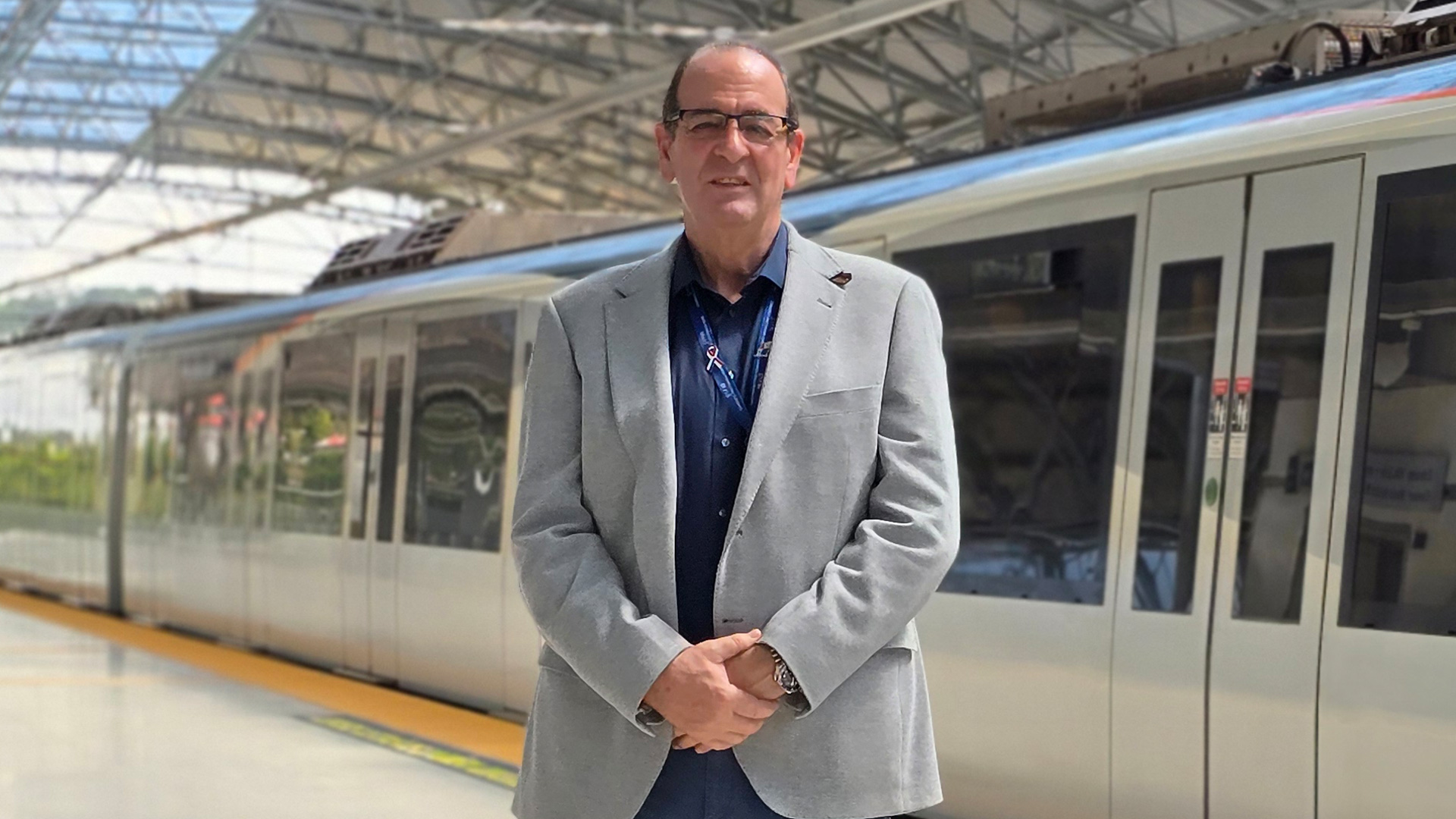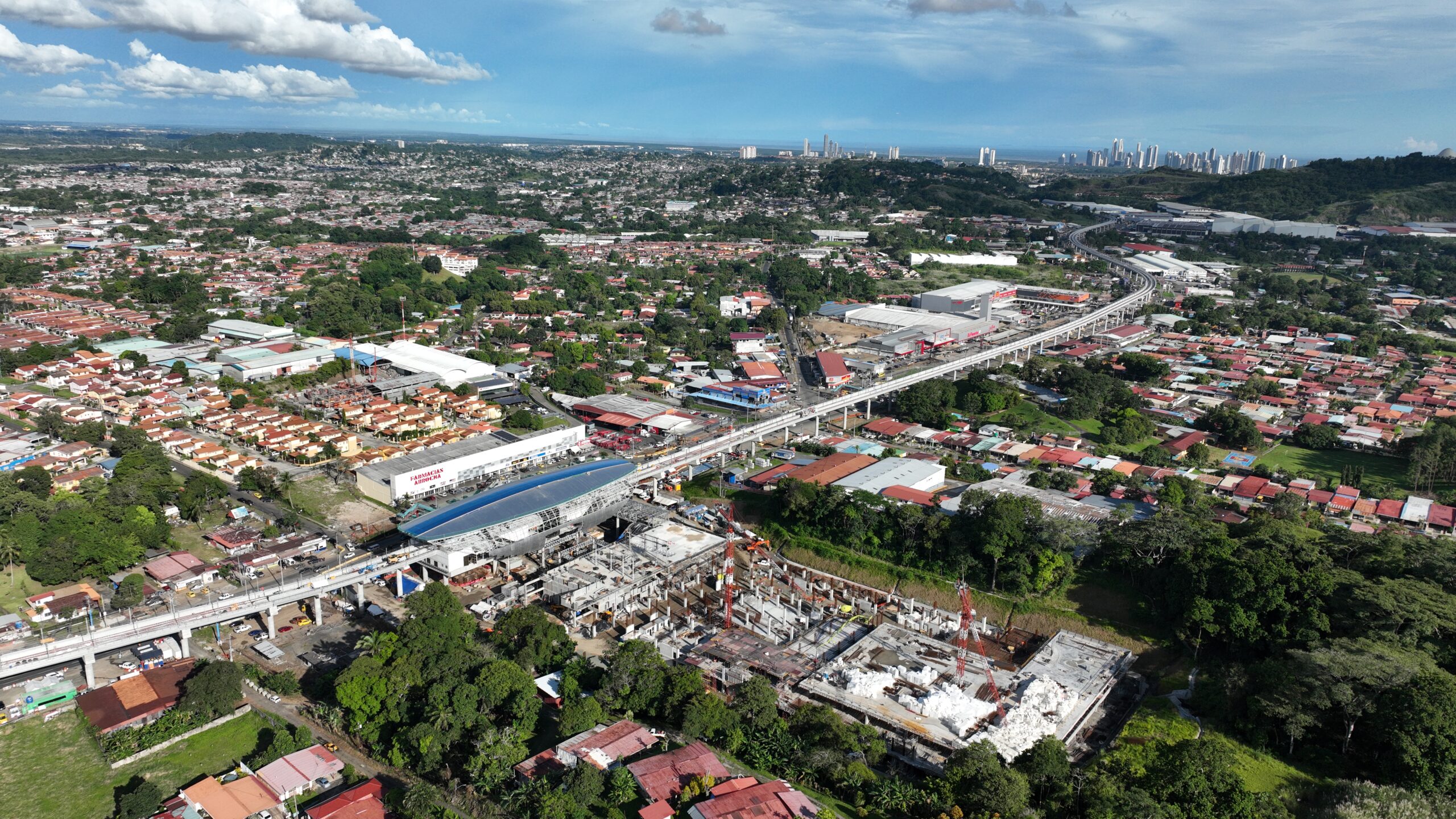
“There is no greater satisfaction, when you complete a project, than to see the joy of people enjoying our years of work, sacrifice and dedication”
Mario Hernández García
The first phase of the Panama subway expansion project, which was recently inaugurated, received a safety award from the Ministry of Labor and the Panama Construction Workers Union. More than 300,000 people will benefit from this infrastructure, which will relieve traffic congestion in the northern part of the city. Mario Hernández García, project manager, tells us the details of this significant project, which consolidates our presence in the Panamanian country.
1. Congratulations, first of all, on your participation in one of the infrastructure projects of the year in Panama. What does it mean to you to have been part of it?
It has meant a lot to me to be in charge of this important project, both for Panama and for OHLA.
2. Briefly tell us, thinking about the users of the infrastructure, what advantage does it bring to their safety and well-being?
The extension of Line 1 of the Panama Metro brings significant value to the northern area of Panama City, directly impacting 300,000 users by improving the existing city traffic with a fast, efficient, and safe mode of transportation like the metro. Since the inauguration, we have seen how citizens are massively using the facilities and enjoying this long-awaited service.
It is worth noting that Panama City has a high volume of traffic. During rush hours, there are many traffic jams or “tranques,” as they are called here, and the project area is particularly characterized by this. Therefore, extending the metro with a new station helps to alleviate traffic congestion, allowing people to spend less time on the road, get home faster, and spend more time with their families.
3. A project of this magnitude requires careful planning, tell us how that process has been and what challenges you have faced and successfully overcome throughout its construction.
This has been a quite complex project from a contractual and planning standpoint. An example of this was the need to replace a 500-meter linear section of trench, which was part of the road expansion improvements, with the complete restoration of the road in the area and to add the design and construction of a polyclinic. Clearly, all these modifications require redesigns and replanning of the project, and the consortium has been successfully managing them to achieve the objectives.
One of the great successes of this project has been the excellent communication at the consortium level and also the good relationship with the client (Metro de Panama).
Additionally, in terms of safety and health, the project has been nationally awarded by the Ministry of Labor, as well as by the Construction Workers’ Union of Panama.
4. What would you highlight about the human team involved in the work?
The most remarkable aspect is the unity and commitment of the entire team in driving the project forward. This contract was executed by a consortium between OHLA and ME (Mota Engil), and through it, we have managed to unite the team and ensure that everyone works towards a common goal. This is one of our successes in this project.
5. How do you value this project within the framework of what OHLA means, at an international level, for its contribution to progress through infrastructure development?
As I mentioned earlier, our company is coming out much stronger with this project, and both its presence in the country and at the international level are significantly expanding. We hope to have continuity; in fact, we have already started another project for the Panama Canal.
6. What new challenge awaits you now that you have completed this project?We have actually completed Phase 1 of the project, the most important of all, with the commissioning of the extension of Metro Line 1 and the Villa Zaita station. Phase 2, which involves the completion of an interchange with a capacity for 662 cars and 14 bus docks, as well as the completion of the Edilberto Culiolis polyclinic, is still pending. These elements are all connected to the station.
We are also working on Phase 3, which contemplates the widening from two to three lanes of Transístmica Avenue in a 2.3-kilometer-long section. The main challenge of this last scope is that it will be carried out with vehicular traffic and in an area of high vehicular flow.
7. What does it mean to link your professional career to the history of the company?
My career is directly linked to OHLA, to whom I have dedicated more than 25 years of my professional life. They have been years of hard work, but also of deep gratitude to this company. I would like to take this opportunity to express my gratitude for the support I have always received from our management.
8. How do you live the experience of being an active part of the construction sector, in which OHLA occupies a prestigious position worldwide?
It has always been a privilege to work at OHLA and to have faced great professional challenges both inside and outside Spain. Our company is a worldwide reference and I have witnessed this in 12 years of international work in three different destinations.
9. Do you have a message for young professionals who want to develop their career at OHLA?
Discipline, perseverance, dedication and sacrifice. Professional challenges are becoming bigger and more complex, but there is no greater satisfaction, when you complete a project, to see the joy of people enjoying our years of work, sacrifice and dedication.

You may be interested in
Braulio Arana – Environmental Coordinator for the Lacramarca river defenses project
"Teamwork is the most important pillar for the project: collaboration,...
Leer másVictoria Sahuquillo Carrasco Economic and Administrative Manager at G&O
"The motivation that binds us at G&O makes the projects...
Leer másSimón Valbuena
Young Talent. Trainee Engineer
"I am proud to be able to contribute to building...
Leer más